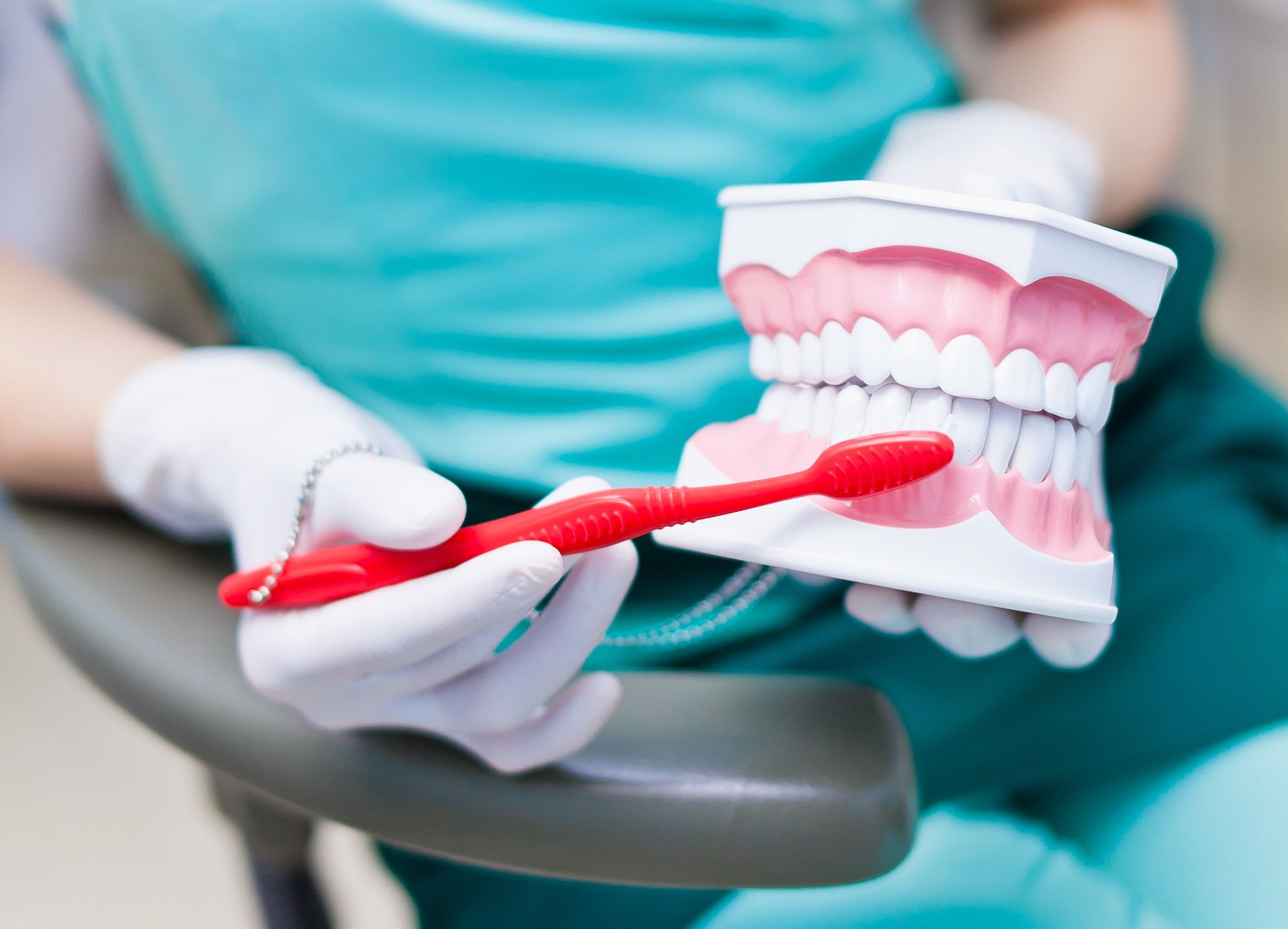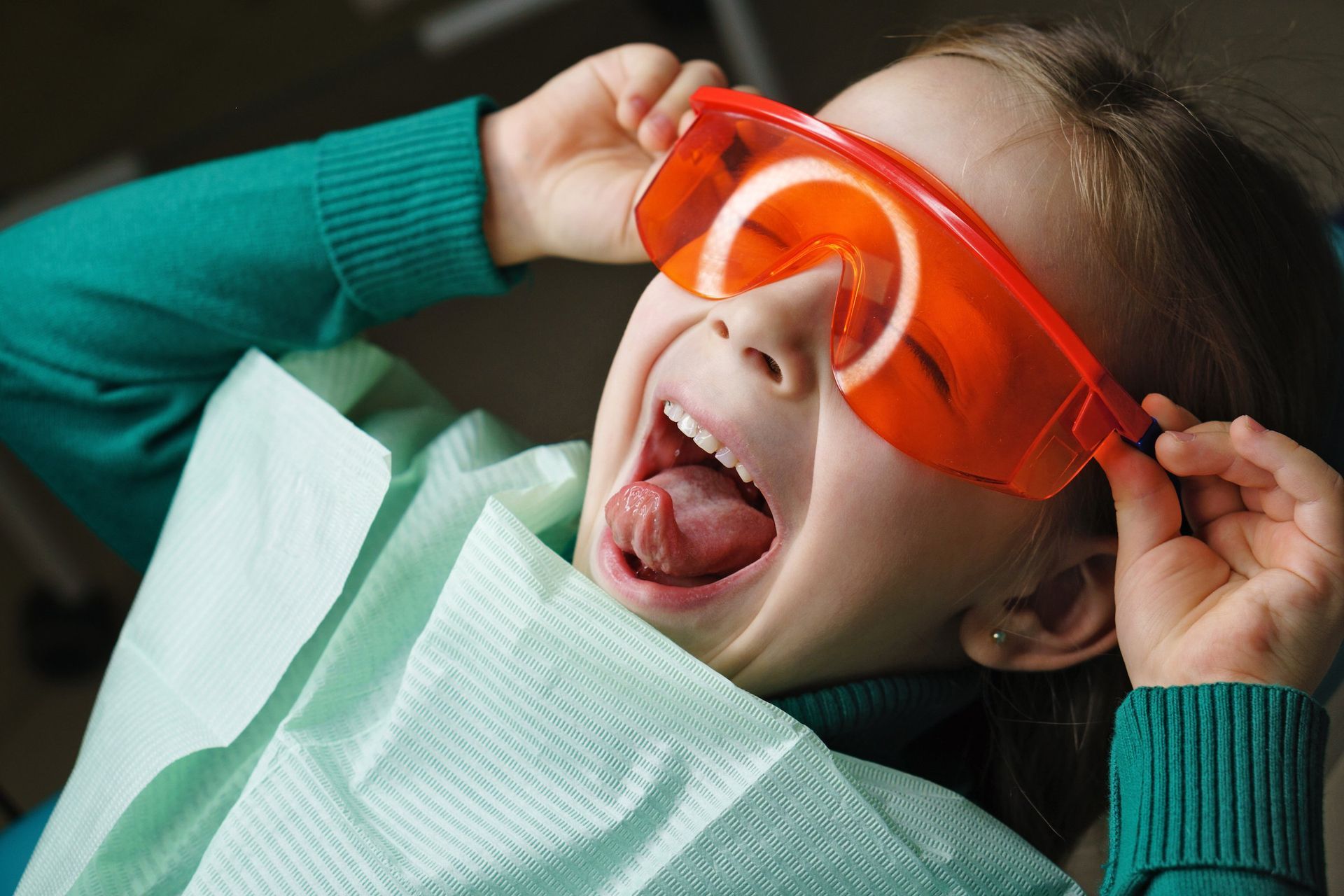Myofunctional Therapy
Myofunctional therapy is a personalized, exercise-based treatment that focuses on correcting improper tongue posture, breathing patterns, and muscle function of the face and mouth. This therapy is designed to improve the way you breathe, speak, swallow and sleep by strengthening the orofacial muscles and promoting healthy habits.

What Is Teeth Grinding?
Teeth grinding, also known as bruxism, is a common condition where patients clench or grind their teeth, often unconsciously during sleep. While occasional grinding may not cause harm, frequent or severe bruxism can damage teeth, strain jaw muscles, and contribute to TMJ (temporomandibular joint) disorders.
Effects of Teeth Grinding
Left untreated, teeth grinding can lead to:
- Worn, chipped, or fractured teeth
- Tooth sensitivity or pain
- Tension headaches or migraines
- Jaw soreness or stiffness
- Clicking, popping, or locking of the jaw (signs of TMJ dysfunction)
- Sleep disruption for you or your partner
Understanding TMJ Disorders
The temporomandibular joint (TMJ) connects your jaw to your skull, working like a hinge. When this joint or the surrounding muscles are strained, it can cause discomfort, difficulty chewing, or even chronic pain. Bruxism is one of the most common contributors to TMJ problems.
Treatment Options
Our practice offers several therapies to protect your teeth, relieve pain, and restore jaw function:
- NTI-tss Device: A small, custom-fitted appliance worn over the front teeth that prevents grinding and reduces tension on the jaw muscles. It has been proven effective in reducing headaches and jaw strain.
- Myofunctional Therapy: A series of guided exercises that strengthen and retrain the muscles of the tongue, face, and airway. This therapy addresses the root causes of teeth grinding and TMJ issues by improving breathing patterns, tongue posture, and muscle balance.
- Custom Nightguards: Comfortable, custom-made oral appliances that protect teeth from wear and ease pressure on the jaw joint.
Take the Next Step
If you wake with headaches, jaw pain, or notice signs of tooth wear, you may be grinding your teeth at night. With modern therapies and personalized care, we can help protect your smile and improve your overall comfort.

Sleep Disordered Breathing, Snoring & Sleep Apnea
What Is Sleep Disordered Breathing?
Sleep disordered breathing (SDB) is a group of conditions that affect how you breathe while you sleep. The most common forms are:
- Snoring – caused by vibration of tissues in a narrowed airway.
- Obstructive Sleep Apnea (OSA) – when the airway repeatedly collapses or becomes blocked during sleep, stopping airflow and disrupting rest.
Even mild interruptions in breathing can prevent you from reaching the deep, restorative stages of sleep your body needs.
Symptoms to Watch For
- Loud, chronic snoring
- Pauses in breathing, choking, or gasping at night
- Morning headaches or dry mouth
- Daytime sleepiness, fatigue, or difficulty concentrating
- Irritability, mood changes, or memory issues
- Teeth grinding or jaw soreness
Why It Matters
Left untreated, sleep disordered breathing doesn’t just affect sleep quality — it can also increase the risk of:
- High blood pressure
- Heart disease and stroke
- Type 2 diabetes
- Weight gain or difficulty losing weight
- Cognitive decline and memory problems
Treatment Options
The good news: sleep disordered breathing is highly treatable. At our practice, we offer personalized therapies designed to improve airflow, protect your health, and restore refreshing sleep.
- Custom Oral Appliances – Small, comfortable devices worn at night that gently reposition the jaw and tongue to keep the airway open. A great option for snoring or mild to moderate sleep apnea, and for patients who can’t tolerate CPAP therapy.
- Myofunctional Therapy – A series of guided exercises to strengthen the tongue, lips, and airway muscles. This helps improve breathing patterns, reduce snoring, and support long-term oral health.
- Collaborative Care – We work closely with sleep physicians to ensure you receive the right diagnosis and treatment plan for your unique needs.
Take Back Your Sleep
If you or a loved one struggles with snoring, fatigue, or has been diagnosed with sleep apnea, help is available. Treating sleep disordered breathing can improve your energy, protect your health, and give you — and your partner — a better night’s sleep.

Thumb-Sucking & Oral Development
Why Thumb-Sucking Matters
Thumb-sucking is a natural reflex for infants and young children. While it can provide comfort early in life, if the habit continues beyond the toddler years, it may begin to affect proper growth and development of the mouth and face.
Long-term thumb-sucking can lead to:
- Changes in the shape of the palate (roof of the mouth)
- Misaligned or protruding front teeth
- Open bite or crossbite
- Speech difficulties
- Altered tongue posture and swallowing patterns
When to Address the Habit
Many children stop sucking their thumb on their own between ages 2–4. If the habit continues past this stage, especially once permanent teeth begin erupting, intervention is recommended to protect proper oral development.
How We Can Help
Our office provides gentle, supportive strategies to help children stop thumb-sucking in a positive way. One of the most effective approaches is myofunctional therapy — a program of fun, guided exercises that retrain the tongue and facial muscles. By strengthening these muscles and improving tongue posture, myofunctional therapy helps eliminate the need for oral habits like thumb-sucking and supports healthy growth.
In some cases, additional tools or appliances may be recommended to discourage the habit and protect the teeth. Every plan is tailored to the child’s age, needs, and comfort.
Building Healthy Habits for Life
Thumb-sucking cessation is not just about breaking a habit — it’s about setting the stage for healthy breathing, speech, and dental development. With encouragement, consistency, and the right guidance, children can overcome thumb-sucking and thrive.

Mouth Breathing & Your Health
What Is Mouth Breathing?
Breathing through the mouth instead of the nose may seem harmless, but over time it can negatively affect oral health, sleep, and overall wellness. While occasional mouth breathing is normal (such as during a cold or allergies), chronic mouth breathing often signals an underlying problem with the airway or oral muscle function.
Effects of Mouth Breathing
When the body relies on mouth breathing instead of nasal breathing, it can lead to:
- Dry mouth, bad breath, and higher risk of cavities
- Narrow dental arches and misaligned teeth in children
- Altered facial growth and “long face” appearance in developing kids
- Snoring, restless sleep, and fatigue
- Poor tongue posture and swallowing patterns
- Increased risk of sleep disordered breathing and sleep apnea
Therapies to Support Healthy Nasal Breathing
- Myofunctional Therapy
Myofunctional therapy uses targeted exercises to strengthen and retrain the tongue, lips, and airway muscles. These exercises help promote correct tongue posture, establish nasal breathing, and create balance in the oral-facial complex. It is effective for both children and adults. - Mouth Taping
In some cases, gentle mouth taping at night can be recommended to encourage nasal breathing during sleep. This is done only under professional guidance and is used in combination with therapies like myofunctional exercises. It can improve oxygen intake, reduce snoring, and enhance sleep quality. - Collaborative Care
Because mouth breathing may be linked to allergies, enlarged tonsils/adenoids, or nasal obstruction, we often work in collaboration with ENT specialists and sleep physicians to ensure comprehensive care.
Take the Next Step
If you or your child breathe through the mouth instead of the nose, it may be more than just a habit — it could be impacting long-term health. With the right therapy and guidance, nasal breathing can be restored, improving sleep, dental health, and overall wellness.
Additional Information
Benefits of Myofunctional Therapy
Improved breathing
Encourages nasal breathing, which supports better oxygenation, reduced snoring, and enhanced sleep quality.
Better Sleep
Can help reduce symptoms of sleep-disordered breathing, including obstructive sleep apnea.
Enhanced Oral Function
Supports proper chewing, swallowing and speech developement-especially in children.
Orthodontic Support
Helps maintain the results of orthodontic treatment and may reduce the need for braces or relapse.
Facial Balance
Promotes healthy facial growth and symmetry in children and improved muscle tone in adults.
Reduced Habits
Aids in eliminating harmful habits such as thumb sucking, tongue thrusting, and prolonged pacifier use.
Common Myofunctional Disorders
- Mouth breathing
- Sleep disorders such as snoring/sleep apnea
- Open mouth posture
- Tongue tie
- Atypical swallow patterns
- Grinding of the teeth
- Cavities
- Misaligned teeth/Orthodontic Relapse
How Therapy Works
After the initial consult, a plan is designed specific to each person. The typical course of therapy includes 15 sessions over the course of about 10-12 months. Sessions are 30 mins and can be done in office or virtually.
How do I get Started?
We start with a consultation to determine the specific myofunctional disorders present. This includes measurments and photos. We document symptoms and determine if any referrals are needed.







